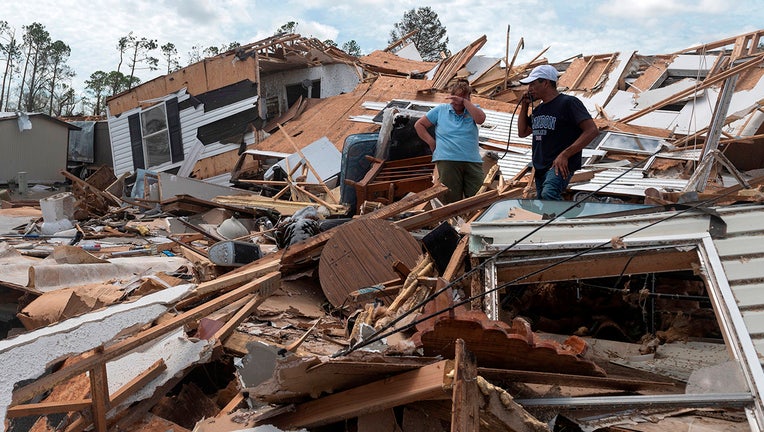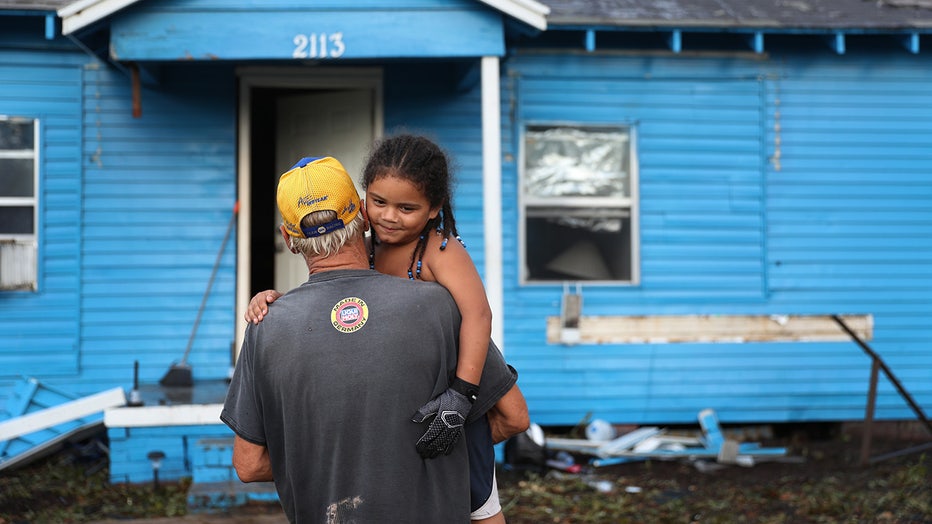Report: Nearly 7.8M homes at risk of hurricane damage

A couple react as they go through their destroyed mobile home following the passing of hurricane Laura in Lake Charles, Louisiana, on August 27, 2020. (Photo by ANDREW CABALLERO-REYNOLDS/AFP via Getty Images)
Nearly 7.8 million homes with more than $2.3 trillion in combined reconstruction cost value (RCV) are at risk of hurricane-related damages during this Atlantic season, CoreLogic's 2022 Hurricane Report says.
In evaluating the storm surge and hurricane wind risk levels for both single-family and multifamily residences along the Gulf and Atlantic Coasts this season, the corporation said that 33 million homes with nearly $10.5 trillion in combined RCV are at risk of wind and flooding-related destruction.
More than 31 million single-family homes were at moderate or greater risk and over 7.5 million of the homes had direct or indirect coastal exposures and subsequent risk from coastal storm surge and damage from hurricanes.
At the metropolitan level, New York City has the greatest risk, with nearly 900,000 homes with more than $432 billion in RCV at risk of storm surge damage and more than four million homes with more than $2.2 trillion in RCV at risk of wind damage.
At the state level, three Gulf Coast states have the greatest number of homes at risk of storm surge damage.

A bent stop sign in a storm damaged neighborhood after Hurricane Ida on September 4, 2021 in Grand Isle, Louisiana. (Photo by Sean Rayford/Getty Images)
Florida has nearly three million, Louisiana has close to 911,000 and Texas has more than 542,000 homes at risk, respectively.
The Lone Star State leads for hurricane wind risk, with more than 8.8 million homes.
Hurricane season occurs from June through November.
The forecast from the National Oceanic and Atmospheric Administration (NOAA) predicts anywhere from six to 10 hurricanes and three to six major hurricanes.
There is a 65% chance of an above-normal season.

Richard Vincent and his son Micah Vincent relax outside of their home which sustained damage and lost electrical power after Hurricane Laura passed through the area on August 28, 2020 in Lake Charles, Louisiana. (Photo by Joe Raedle/Getty Images)
CoreLogic said that climate change-spurred sea-level rise, stronger winds, higher rainfall rates and increasing hurricane frequency have exacerbated the risk of coastal and inland flooding and increased the risk of structural damage.
"Stronger hurricane seasons mean property losses will continue to mount," it said. "The insurance industry will see increased financial implications because wind damages are covered by standard homeowners' insurance policies."

